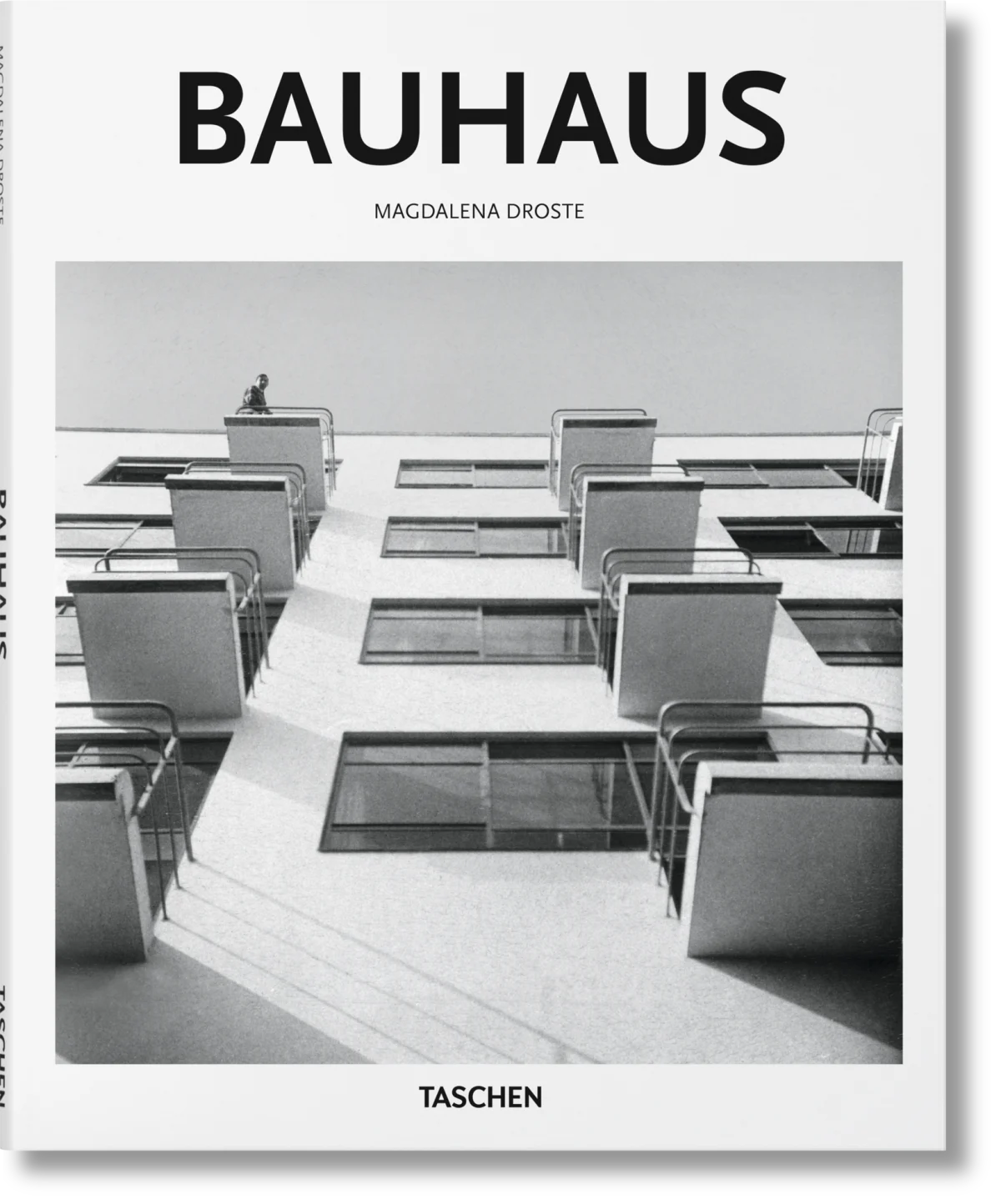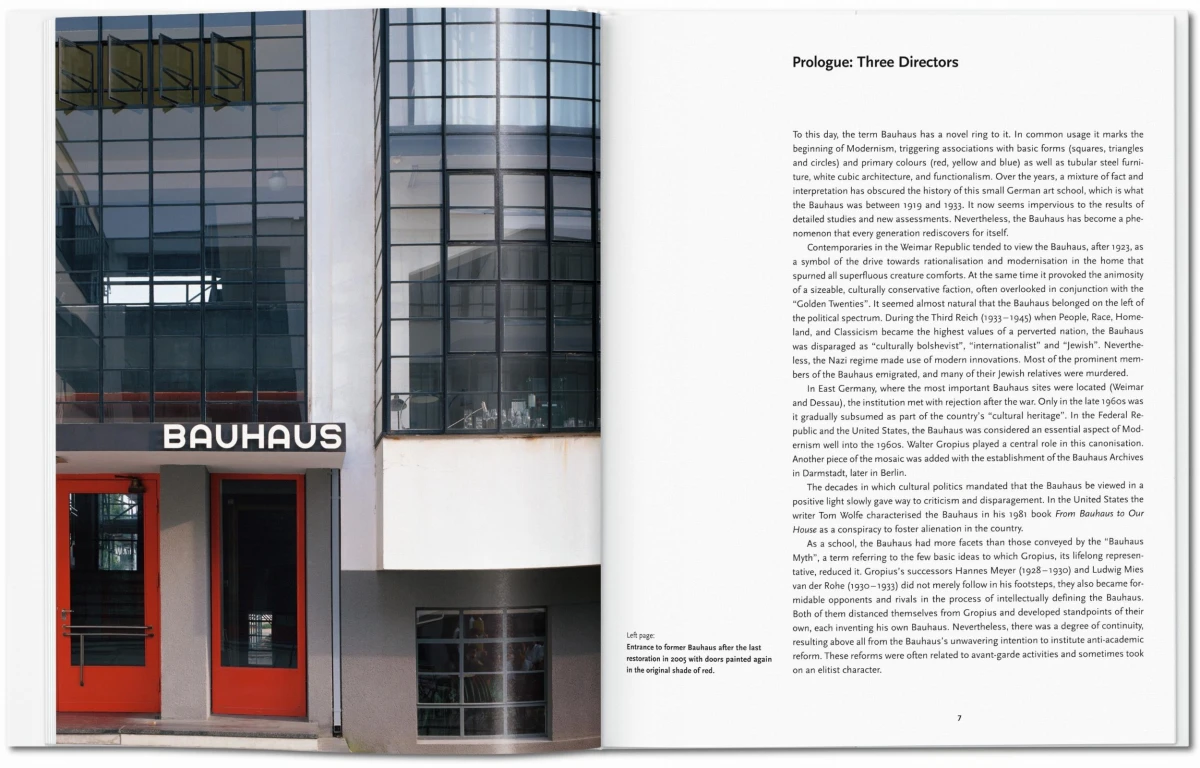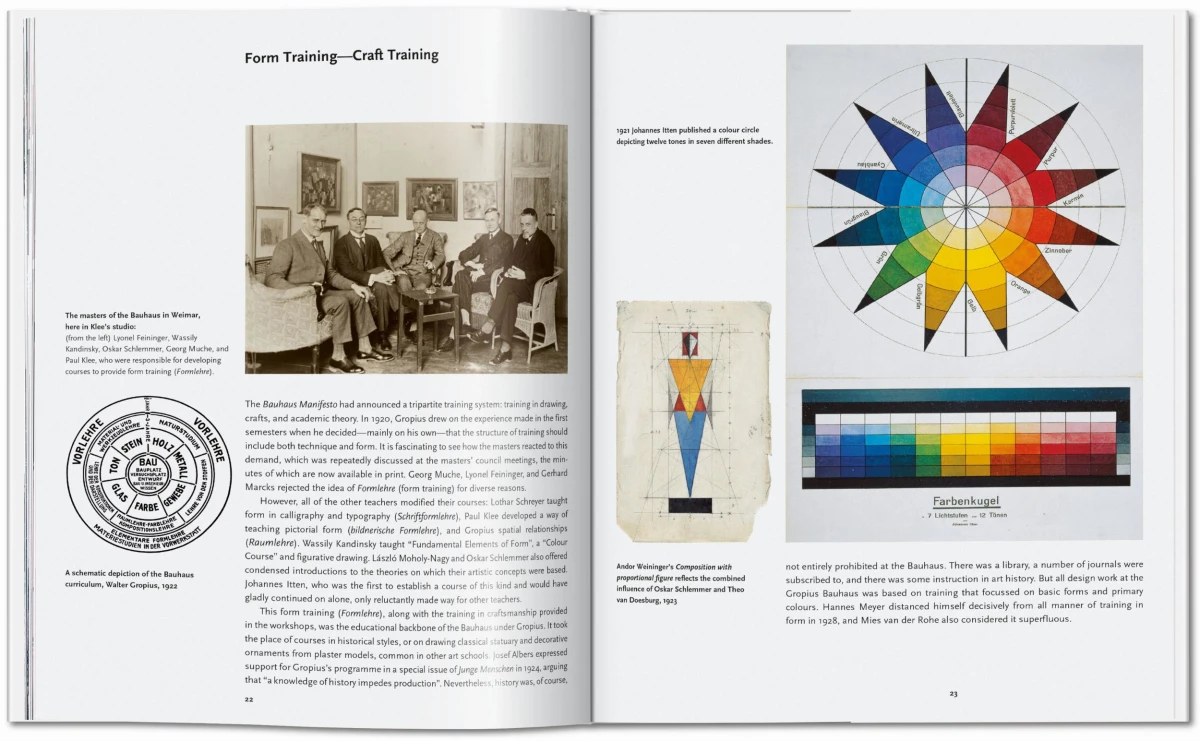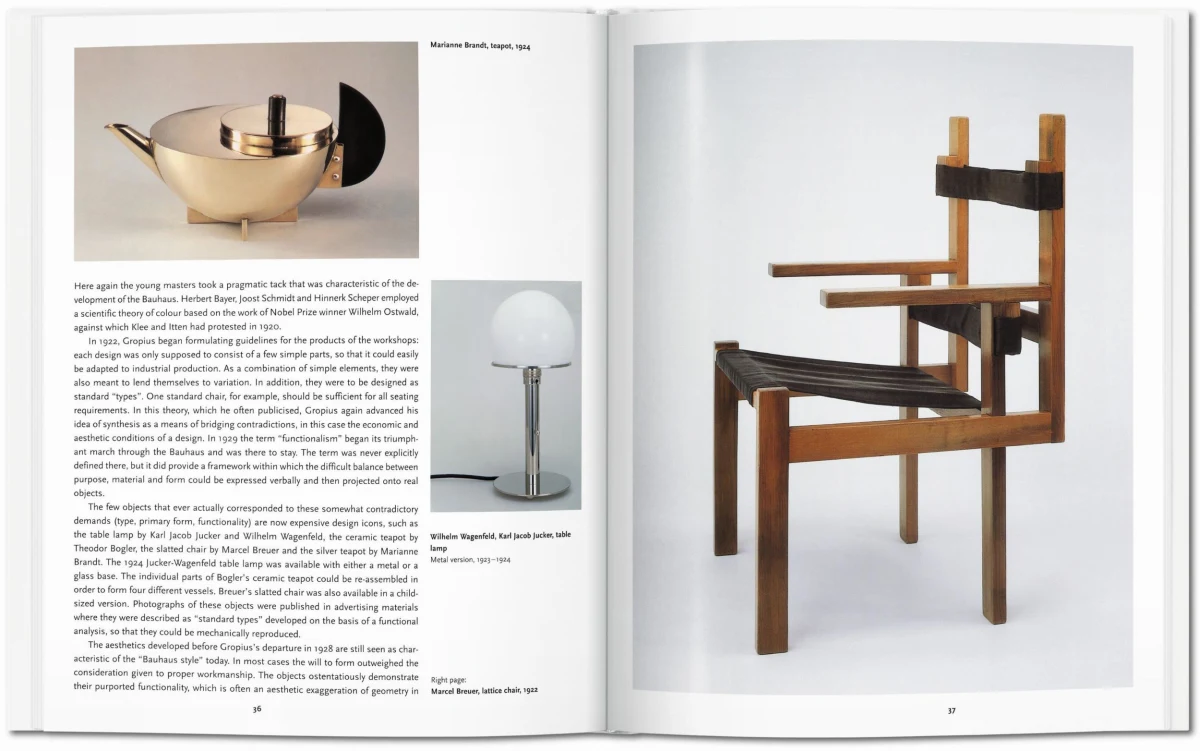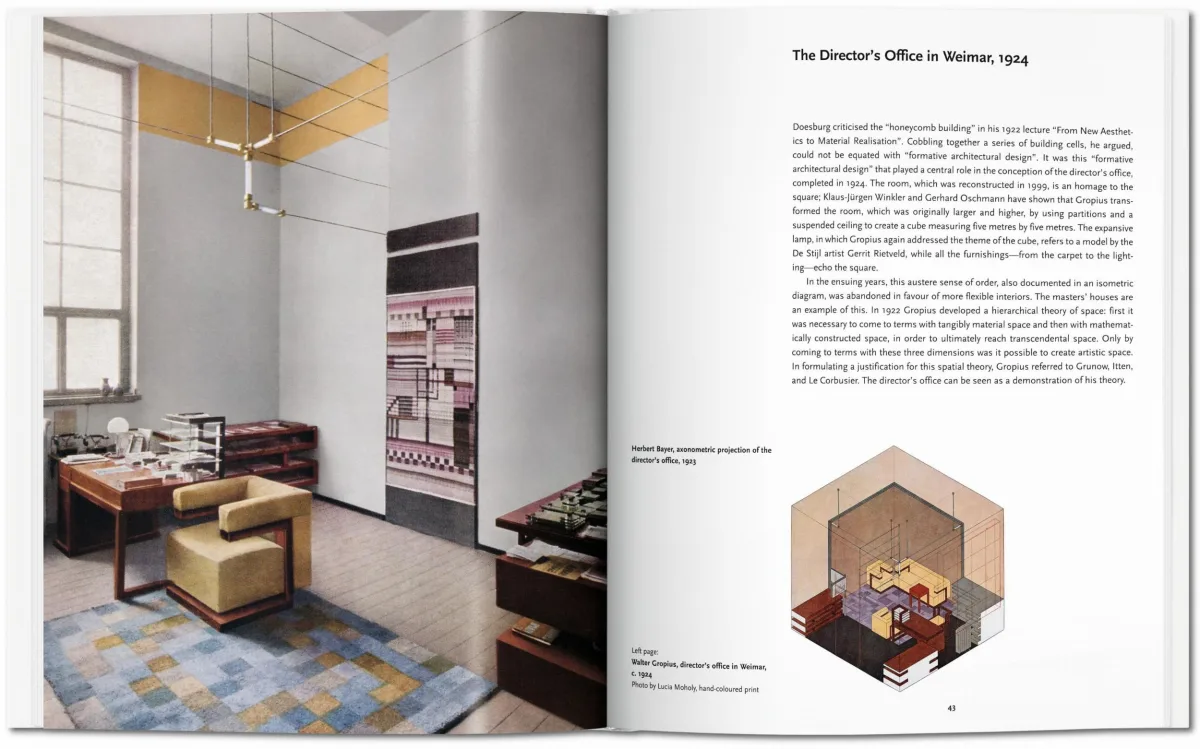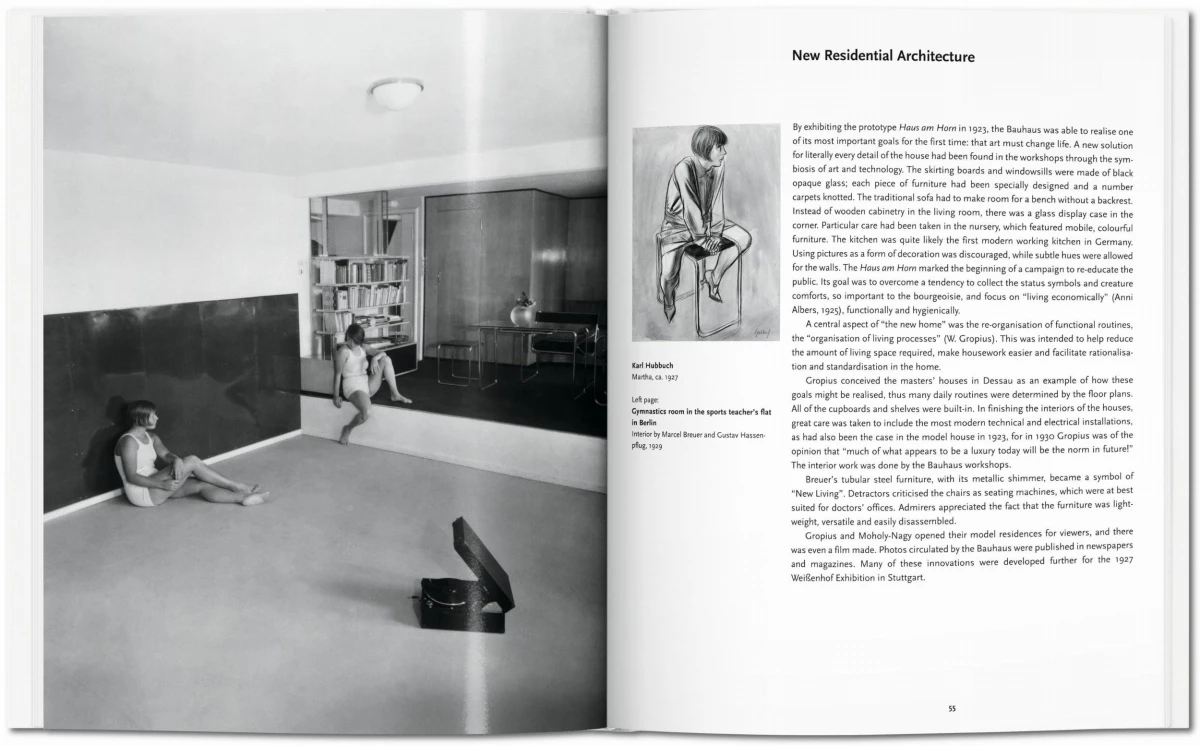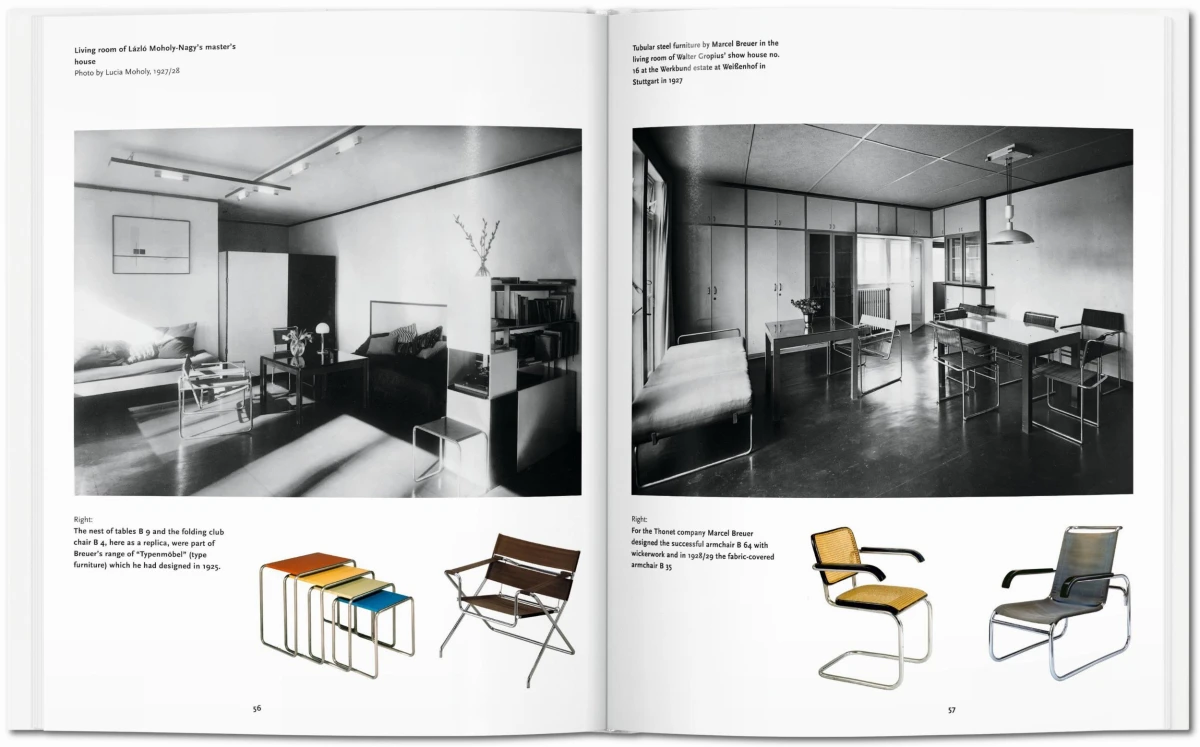Bauhaus
20Availability: In Stock
Bauhaus
20The Bauhaus impact
The most famous art school of modernity
As much an intense personal community as a publicly minded collective, the Bauhaus was first founded by Walter Gropius (1883–1969), and counted Josef and Anni Albers, Wassily Kandinsky, Paul Klee, Oskar Schlemmer, Gunta Stölzl, Marianne Brandt and Ludwig Mies van der Rohe among its members. Between its three successive locations in Weimar, Dessau and Berlin, the school fostered charismatic and creative exchange between teachers and students, all varied in their artistic styles and preferences, but united in their idealism and their interest in a “total” work of art across different practices and media.
This book celebrates the adventurous innovation of the Bauhaus movement, both as a trailblazer in the development of modernism, and as a paradigm of art education, where an all-encompassing freedom of creative expression and cutting-edge ideas led to functional and beautiful creations.
The author
Magdalena Droste studied art history and literature in Aachen and Marburg. From 1980 she worked at the Bauhaus-Archiv in Berlin, after which she worked as a professor of art history at the BTU Cottbus. She has been responsible for numerous exhibitions and publications across all Bauhaus themes and artists.
The editor
Peter Gössel runs an agency for museum and exhibition design. He has published TASCHEN monographs on Julius Shulman, R. M. Schindler, John Lautner, and Richard Neutra, as well as several titles in the Basic Architecture series.
Bauhaus
Hardcover, 8.3 x 10.2 in., 1.39 lb, 96 pagesISBN 978-3-8365-6012-2
Edition: SpanishISBN 978-3-8365-6013-9
Edition: FrenchISBN 978-3-8365-6014-6
Edition: EnglishBorn back in 1985, the Basic Art Series has evolved into the best-selling art book collection ever published. Each book in TASCHEN’s Basic Architecture series features:
• an introduction to the life and work of the architect
• the major works in chronological order
• information about the clients, architectural preconditions as well as construction problems and resolutions
• a list of all the selected works and a map indicating the locations of the best and most famous buildings
• approximately 120 illustrations (photographs, sketches, drafts, and plans)
5

